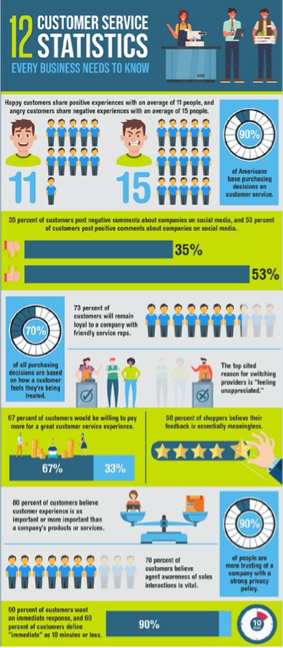We want to hear from you! Take the survey.
How do you use It’s Your Yale? How can it be improved? Answer for a chance to win Yale swag.
Spotlight: Delight Customers with Superior Service Experiences
Everyone we interact with is a customer in one way or another, and we all know good customer service when we see or experience it ourselves. We can all remember how nerve-racking our first job interviews were. One teen in Raleigh, North Carolina wanted to make sure he made the best first impression possible. Before his job interview, he stopped by Target to pick up a clip-on-tie. He asked an employee for help, but it turned out that the store only sold regular ties. Rather than leave it at that, the employee offered to show the young man how to tie a tie. From there, they practiced a few handshakes and went over some mock interview questions. When the teen left the store, he was met with supportive cheers from other Target employees!
Let’s face it…. outstanding customer service is one part skill, one part technology…and a million parts attitude. How you treat people, and the experience you provide matters more than anything. So how do you provide a superior service experience?
You can turn good customer service into great customer service by adding a human touch and a sprinkle of compassion to all your interactions. Here are four ways to make that happen:
Develop empathy as your cornerstone
Although we may not have experienced what a person is going through, empathy allows us to understand an emotional reaction to a particular situation. Sometimes we are so focused on what we are going to say that we miss the opportunity to listen and be present. Daniel Pink in his book “A Whole New Mind” says, “Empathy is about standing in someone else’s shoes, feeling with his or her heart, seeing with his or her eyes”. Above all else, people want to feel understood, respected, and supported.
Exude positivity by watching your words
So how do you become more positive? Make a conscious choice to replace negative words with positive words, both verbally and mentally. To understand the power of positive language, think about the negative language you can reframe—from “I don’t know” to “I will talk with the right team member and get back to you” or from “please calm down” to “I am sorry, I understand. I would be frustrated too. Here is how I can help you”. Listen to your own thoughts because everyone has a unique set of negative self-talk scripts on repeat, especially when stressed. Unearth your own. Then, catch and replace them. For example, instead of self-talking “I can’t control the situation” or “that will never work”, re-talk to “This is what I can control” and “I can make this work”.
Practice patience by knowing your triggers.
Providing service in not an easy job. Sometimes others will be angry with you. Sometimes, they will need extra attention to understand what seems obvious. And sometimes, they lash out. No matter what the issue, the worst thing you can do in any of these situations is to lose your cool. Impatience impedes our ability to enjoy life and makes us worse at doing hard things. Pay attention when irritation starts. Find the external triggers that “press your buttons” and generate a strong emotional response (for example when someone is raising their voice at you, ignoring you or not listening) and make a mental list so you are ready should they occur.
Keep it simple.
Simplicity has one rule: less is more. Less jargon, smaller words, shorter sentences. Keeping things simple without distorting what needs to be done can empower others as it removes the barriers of doubt and confusion. Complexity, on the other hand, can quickly lead to confusion, impatience and negative emotions that can become counterproductive to resolving an issue. Albert Einstein quoted “If you can’t explain it to a child, you don’t understand it yourself.” Ask yourself “What can I remove?” Look for opportunities to simplify from paragraphs to sentences to phrases to words.
 Resources
Resources
- Superior customer service gets five stars | It’s Your Yale
- Career Corner: Succeed with customers | It’s Your Yale
- Build loyalty through happy customers (linkedin.com)
- Improving customer experience (CX) (linkedin.com)
- Bringing customers to the forefront (linkedin.com)
- Customer success management fundamentals (linkedin.com)
- Service orientation matters (linkedin.com)


